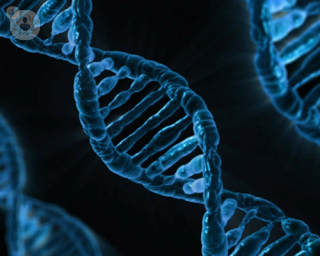Linfoma non Hodgkin
What is non-Hodgkin’s lymphoma?
Non-Hodgkin’s lymphoma is a type of cancer that begins in your lymph nodes. This is the system which produces white blood cells to fight disease all over your body.
In non-Hodgkin’s lymphoma, your body produces too many lymphocytes (a type of white blood cell), and these start to pool in your lymph nodes and cause swelling.

What is the outlook?
Survival rates from non-Hodgkin’s lymphoma are good. Approximately 80% of people survive their diagnosis for 1 year or more, and 65% survival for 10 years or more.
Survival rates depend on the type of non-Hodgkin’s lymphoma you have. Non-hodgkin’s can be classed as low-grade (slow-growing but harder to cure completely) and high-grade (fast growing but more easily curable). Survival rates for low-grade non-Hodgkin’s lymphoma are higher.
What are the symptoms?
The most common symptom is painless swelling in one or more of your lymph nodes, usually in the next, groin or armpit. You may also experience:
- unexplained weight loss
- night sweats
- fever
- itchiness
If you have abnormal cells in your bone marrow you might additionally experience persistent tiredness or excessive bleeding.
How is it diagnosed?
Non-Hodgkin’s lymphoma is diagnosed with a biopsy. This is a quick surgical procedure to remove a small amount of tissue from a lymph node and examine it in a laboratory. By studying the cells, a diagnosis can be made on whether you have non-Hodgkin’s lymphoma and if so, what type you have.
After a diagnosis you may undergo further tests to establish how far the cancer has spread, which can in turn inform what treatment you need.
What causes non-Hodgkin lymphoma?
Although the exact cause of non-Hodgkin’s lymphoma is not known, the following factors increase your chances of developing the condition:
- age – a third of people with the condition are over the age of 75
- having an autoimmune condition such as rheumatoid arthritis or lupus
- past infection from the Epstein-Barr virus, human T-cell lymphotropic virus or Helicobacter pylori
- past radiation or chemotherapy treatment
- immunosuppressant treatment
How is it treated?
Treatment depends on the rate at which the cancer cells are developing.
For low-grade disease, where growth is slow, your doctors might recommend a “wait and see” approach to monitor the symptoms over time. This means you can delay treatment and carry on with your normal life.
If you decide to go ahead with treatment, the main options are:
- chemotherapy – this involves taking medication to kill the cancer cells. Chemotherapy has a wide range of side effects, including damage to your bone marrow. If this occurs, you may need a stem cell or bone marrow transplant to replace the bone marrow that was damaged.
- steroids – this is often used to make the chemotherapy treatment more effective.
- radiotherapy – this involves delivering bursts of targeted radiation to the areas where the cancer cells are multiplying. Side effects can include sore skin, tiredness, hair loss, or loss of appetite, depending on where the radiation was delivered.
- monoclonal antibodies – this is a form of immunotherapy where medication is taken to instruct your immune cells to attack the cancer cells in your body. Side effects can include tiredness, rash, hair loss, and nausea.
During your treatment you may come into contact with a wide range of specialists, including clinical oncologists, radiologists, pathologists, and haematologists.









